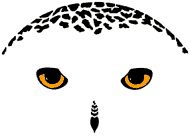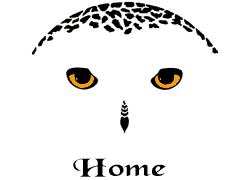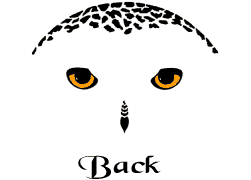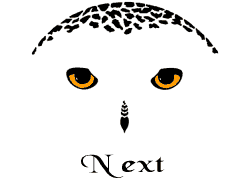
Ogham
The following piece is another place holder until I get time to put up the work I've done with the ogham. I started with the glosses that John Matthews provides in his book on Celtic Shamanism and then used these in a variety of spells
Nov 18, 1995 17:36 from Kieron
The following is a long, long post. If you're not interested in reading about etymology of
words, mythological inferences, and the Druidic calendar, then skip this now. But this is
too good to pass up, IMHO. The author, John King, did an impressive job of researching the
past, and I will do my poor best to summarize it. From The Celtic Druids' Year:
The Beth-Luis-Nion, named after its first three letters, just as we call our modern alphabet the ABC, has only thirteen consonants [corresponding to the 13 lunations or moon cycles of the year] and five vowels, as follows:
B L N F S H D T C M G P R ; A O U E I
Robert Graves, in The White Goddess, adds four letters to the Beth-Luis-Nion, as follows:
B L N F S SS H D T C CC M G P R ; AA A O U E I II
The four added letters are 'doubles' of their accompanying letter. SS (or Z) follows S; CC
(or Q) follows C; AA (or long O) precedes A; and II (or Y) follows I. The significance of
the Beth-Luis-Nion alphabet is that it contains within it a series of references which
would only be known to the initiated (specifically, Druidic initiates). The references as
listed below are a greatly simplified version of the long, densely detailed description
from Graves.
- B is for Beth (beh), which means Birch.
- It is identified as the tree of inception. Roman lictors carried birch rods at the installation of a new consul, which took place shortly after Midwinter. Moreover, there were 12 lictors assigned to each consul, making 13 in all. In Scandinavia, birch trees coming into leaf signified the start of the agricultural year.
- L is for Luis (lweesh), meaning Rowan, also known as Quickbeam, Quicken, and Mountain Ash.
- In Ireland, Druids lit fires of Rowan wood to summon the spirits of the dead to assist
warriors in battle. In the romance of Diarmuid and Grainne, the rowan berry, apple, and
red nut are all described as "food of the gods," suggesting that there may have
been a taboo against eating them. [Red was also the color that guarded against evil and
kept away faeries --K.]
- N is for Nion (nee-n), meaning Ash.
- This wood was important to the Celts for making spears, chariots, and coracles. In Greece, the ash was sacred to Poseidon, god of the sea. In Ireland, timber from the sacred ash of Killura was carried as a charm against drowning. The great sacred tree of Norse mythology is the ash, Yggdrasill, closely associated with Woden/Wotan/Odin, whose British counterpart is the magician-god/trickster Gwydion. In British folklore, the ash is the tree of rebirth and regeneration.
- F is for Fearn (farn), meaning Alder.
- The sacred tree of Bran the Blessed. The tree was held in high regard by the Celts for the charcoal it produced. The tree stains reddish when cut, reminiscent of the shedding of blood. It also yields three important dyes: red from the bark, green from the flowers, and brown from the twigs. Graves suggests that Orpheus, the Greek totem god of the Orphic initiation undergone by Pythagoras, may have derived his name from the Greek _orphruoeis_ meaning growing on the riverbank, ie., alder.
- S is for Saille (sal-yeh), meaning Willow or Osier.
- It is dedicated to the Goddess in Her death aspect, as represented by Hecate, Circe,
Persephone, and others in Greece, and by Ceridwen, Morgana/Morgan/Morrigan and others in
British mythology. The willow is traditionallu associated with witchcraft, so strongly in
fact that the words wicker (meaning willow reed or osier), wicked, and witch are all
etymologically related. Called _helice__ in Greek, it gave its name to Helicon, the abode
of the Muses. _Helygenn_ is Cornish for willow, and the Goidelic [Irish/Scots/Manx
languages] _saille_ is related to the Latin name _Salix_. The alleged Druidic sacrifices,
as described by Strabo and Caesar, were supposed to have imprisoned their victims in a
huge figure made of wickerwork. Traditional British folklore, as in the well-known song
"All around my hat, I will wear the green willow," commemorates the Willow's
ancient significance as a symbol of the rejected or disappointed lover-- it was originally
intended as a charm and invocation to the Goddess. Its leaves and bark yield salic acid, a
principal component of aspirin, and they were infused since early times to relieve cramps,
esp. menstrual cramps.
- H is for Huath (hoo-ah), the Hawthorn, also called Whitethorn and May.
- It is an unlucky tree. In the Irish Brehon Laws, it is also called _sceith_ which seems related to the Indo-European root _skeud-_ from which shoot, shut and scathe are derived. In the British myths, the hawthorn is also associated with chastity.
- D is for Duir (doo-r or der), meaning Oak.
- The word is very similar in Goidelic and Brythonic, and the word Druids is almost certainly derived from it [as is "door" --K.]. It is the totem-tree of the thunder god in all his manifestations-- Zeus, Jupiter, Thor in Scandinavia, Bel in Britain and Gaul. It is common knowledge the the oak was specially venerated by the Celts. There were also oak cults in Greece and Libya. Graves suggest the oak cult came to Britain via the Baltics somewhere between 1600 and 1400 BCE, at least 500 years before the Celts arrived.
- T is for Tinne, meaning Holly.
- The Brythonic word is _kelynn_. It is the totem tree of the oak-god's twin (or
alternately, his father), the holly-god or Green Knight, represented by Bran the Blessed
in the British traditions and by Cronos is Greece and Saturn in Rome. He is the god of the
waning half of the year [ie., winter], while his brother (or alternately, his son) Bel is
the god of the waxing half of the year. When Christian mythology began subsuming aspects
of earlier pagan mythology, St. John the Baptist (beheaded at Midsummer, the day of
transition between the oak-king and the holly-king) became identified with the oak, which
in turn lef to the identification of Christ with the oak's successor, the holly. This is
the origin of the line of the carol "The Holly And the Ivy": "Of all the
trees that are in the wood, the Holly bears the crown." In Middle English, the word
for holly was spelled _holi_ derived from Old English _holen_. The word holy was also
spelled _holi_, derived from Old Eng. _halig_. There has been an association of holly with
holy ever since. A further association with Christ is the shape of the letter itself. The
Hebrew _Tav_ (the last letter in Hebrew alphabet), the Greek _Tau_, and our letter T all
graphically represent the cross of the crucifixion.
- C is for Coll (kull), meaning Hazel.
- In Celtic mythology, it is always associated with wisdom. Over Connla's Well in Ireland, hung the nine hazels of poetic art-- their nuts fed salmon swimming in the pool (the salmon themselves being associated with wisdom, specifically _gnosis_ or mystic wisdom. Then, as now, the hazel was the favored wood for making divining rods. The letter was used by the Bards to signify the number 9, a highly regarded number because it is the sacred 3, times three. White hazel wands were carried by Druids as a symbol of their authority. The tree was also called _bile ratha_ in Irish, meaning "tree of the rath." The _rath_ was the abode of the _sidhe_ or faery people.
- M is for Muin (moon, like "foot"), meaning Vine.
- The vine is not native to Britain but was important in Mediterranean mythology, principally because it is the source of wine. The vine does figure in Celtic art (esp. in Britain) of the Bronze Age because onward, which suggests that its mythology was understood and to some extent, subsumed into Druidic culture. Graves suggests that the blackberry took the vine's place in British context; he cites British and Welsh taboos against eating blackberries despite the fact that the fruit is very sweet and nourishing. A folk superstition persists in Devon and Cornwall that blackberries are unfit to eat after September because the Devil is in them. [a similar taboo exists against eating berries after Samhain, esp. in the west of Ireland, because they belong to the faeries then --K.]
- G is for Gort (gurt) meaning Ivy.
- Vines and ivy share the characteristic of growing spirally. Both are associated with
resurrection. Ivy leaves, which are toxic, may have been chewed for their hallucinatory
effects. Both holly and ivy are associated with the Holly-god, Bran, or Cronos, or Saturn,
whose demise was celebrated by the Romans at Saturnalia or Midwinter festival. His club is
made of holly, and his sacred bird is the gold-crested wren, which nests in ivy, which
explains why they are linked in the carol "The Holly and the Ivy."
- P is for Peith, meaning Water-Elder, also called Whitten or Guelder-rose.
- Peith is not the original letter [and besides, P is a borrowed sound in Irish though not to Welsh --K.]. The original letter was NG, but for some reason, Graves substituted P for NG, with no explanation other than that the original NG was "of no literary use to the Brythons." At any rate, Ngetal means Reed. In Egyptian and Mediterranean mythology, the reed symbolized royalty. A reed was pushed into Christ's hand when he was mockingly robed in purple.
- R is for Ruis (rweesh), the thirteenth and last of the original consonants, meaning Elder.
- Although the flowers and bark of the elder yield therapeutic substances, and elder flowers and berries make good wine, the tree has a reputation for evil. It is associated with witchcraft and death, along with the yew, cypress and nightshade. The superstition that 13 is unlucky is supposedly derived from the presence of 13 people at the Last Supper, the 13th being Christ's betrayer, but it may also be related to the 13th letter or tree, the evil elder. [The fact that there are 13 moons should be noted, and the moon has long been associated with women's mysteries. Perhaps the Christians linked them to witches and presto, instant supersititon. This is just a speculation, mind you. --K.]
Before moving on to the five vowels, we need to go back to the doubled consonants, SS (or Z), and CC (or Q).
- S is for Saille, the willow. Its double represents the Blackthorn, or Sloe.
- The tree was called _bellicum_ by Romans, which seems to be related to _bellum_ or war,
and it was considered very unlucky in Ireland.
- C is for Coll, and so CC is for Quert, meaning Apple.
- It symbolizes eternal life, since paradise or the otherworld is an apple orchard, called Avalon (_afal_ is Welsh for apple). [Note the Christian parallel of the apple and paradise --K.] There may have been a partial taboo against eating apples, which may have been reserved for royalty or the priesthood.
The five vowels (seven in Graves' restoration) are also associated with trees. Moreover, the vowels are charged with special significance: they emerge from the body without apparent modification, and therefore seem closer to whatever truth is within. In many religions, including Judaism, the mystic and ineffable name of God is formed solely from vowels. None of the consonants has any significance until it is combined with one or more vowels. Some languages omit vowels in writing.
- A is for Ailm (elm), meaning Silver Fir.
- In Greece, the tree was sacred to Artemis. Throughout northern Europe, it was associated with childbirth. The Old Irish word _ailm_ was used for "palm" which is the Middle Eastern tree also associated with childbirth-- revered in Egypt, Babylonia, and Arabia, it also gave its name, through the epithet _phoenix_, meaning bloody, to Phoenicia and to the mythical creature, which symbolizes rebirth. _Ailm_ is the Tree of Life in the story of the Eden. The Hebrew name is _Tamar_, which is found in Britain as the name of the river which now separates Cornwall from Devonshire, supposedly named after a Brythonic goddess, Tamara. Also, the famous Trojan horse was made of silver fir, since it was dedicated to Athene, and because it was in the sacred form of the Mother Goddess as a horse, it represented in Britain and Gaul the goddess Epona.
- O is for Onn (un), meaning Furze or Gorse.
- This prickly bush with its bright golden flowers typifies the Sun at vernal equinox. A
Gaulish goddess, Onniona, takes her name from Onn and Nion (gorse and ash). In Wales, a
sprig of gorse is considered "good against witches."
- U is for Ura (oo-ra), meaning Heather.
- It is associated with bees and Midsummer.
- E is for Eadha (ay-uh), meaning Aspen, also known as White Poplar.
- It is the tree of old age: its leaves are distinctively lighter on the underside-- in a breeze, it turns white [like hair in the elderly].
- I is for Idho (ee-o, ay-o) meaning Yew.
- In all European cultures, the yew is the tree of death. When black bulls were sacrificed to Hecate in Rome, they were wreathed with yew. The red berries are poisonous, and it is generally a toxic shrub.
The two doubled or additional vowels are AA and II, according to Graves. AA is the Palm, and II is the mistletoe. See _The White Goddess_ for full explanation.
The mythology of the sequence of the vowels is very obvious. It runs around the year from birth to death, as follows:
- A - Ailm/silver fir, birth.
- O - Onn/gorse, spring
- U - Ura/heather, high summer.
- E - Eadha/aspen, old age
- I - Idho/yew, death.
The vowels, as shown, do not occupy spaces, or months in the Celtic year. Instead, they form a pentangle which encompasses the entire year. [The significance of 5 can't be overlooked, since they form a five pointed star, which many neopagans use as a symbol of their religion(s) --K.]
Any questions or comments about this site
-- just click on the envelope in Bluey's hands and he'll deliver your message

Šall orginal material copyright: The Inward Jouney, 1986-1998



